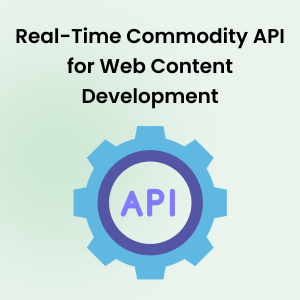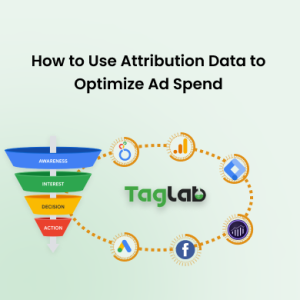Your cart is currently empty!
Employee Net Promoter Score (eNPS)
Posted by:
|
On:
|
Employee Net Promoter Score (eNPS) measures how likely your employees are to recommend their workplace to friends, family, or professional acquaintances—essentially capturing the enthusiasm and loyalty that exist within your company culture. While its cousin, the regular Net Promoter Score (NPS), focuses on external customers, eNPS turns the spotlight inward, revealing how satisfied and engaged your team truly feels. In a world where workplace reputation can spread as quickly as a trending TikTok, a robust eNPS not only helps you retain top talent but also attracts new hires who hear the positive buzz.
How Is eNPS Calculated?
The calculation of Employee Net Promoter Score follows a similar pattern to traditional NPS but zeroes in on staff sentiment. Typically, employees answer a straightforward question like: “On a scale from 0 to 10, how likely are you to recommend this company as a place to work?”
Based on their responses:
- Promoters: Those giving a 9 or 10 are your star advocates, eager to endorse your organization.
- Passives: Those rating 7 or 8 are moderately satisfied but not exactly wearing company merch everywhere they go.
- Detractors: Ratings of 0 to 6 indicate reservations or outright discontent, signifying individuals who might speak negatively or even consider an exit soon.
The eNPS formula itself is quite direct:
eNPS = (% of Promoters) – (% of Detractors)
So, if 50% of your employees fall into the Promoter category and 20% are Detractors, your eNPS would be 30. Although percentages can’t directly exceed 100, the final eNPS score can be negative (if you have more Detractors than Promoters), or even rocket above +50 if you’ve truly cultivated an enthusiastic environment.
Why Employee Net Promoter Score Matters
We’ve all heard tales of workplaces that churn out burnt-out staff like an old coffee machine that never gets cleaned. Or, on the flip side, those magical offices where employees gush over policies, cultural values, and leadership—convincing their entire LinkedIn network to apply. eNPS captures that intangible vibe and quantifies it into an actionable number. Here’s why it’s important:
- Predicting Staff Retention: Satisfied, engaged employees rarely turn into flight risks. A high eNPS typically correlates with lower turnover, saving your HR budget from perpetual recruitment cycles.
- Driving External Branding: Happy teams talk, and so do unhappy ones. Good vibes spread brand positivity, attracting job applicants who match the culture, while negative words can deter top talent.
- Boosting Internal Collaboration: Teams that trust their employer enough to recommend it tend to work together more effectively, breeding synergy and productivity.
- Guiding Leadership Decisions: An eNPS dip might serve as a clarion call to re-evaluate management styles, compensation structures, or company policy clarity.
- Signaling Cultural Health: If employees genuinely promote the organization, chances are, you’re fostering inclusion, growth paths, and supportive leadership—a trifecta for a resilient culture.
Factors That Influence eNPS
Everything from coffee variety in the break room to organizational transparency can affect eNPS. But generally speaking, these are the major levers:
- Leadership and Trust: People rally behind leaders they respect. When C-suite sets a vision and treats employees with decency, employees become fans.
- Work-Life Balance: Overstretched schedules or ambiguous work boundaries can lower morale, shifting many employees into the Detractor category.
- Growth Opportunities: Staff who see a clear upward path—via training, promotions, lateral moves—tend to endorse the company wholeheartedly.
- Recognition and Appreciation: Frequent high-fives, be they verbal “thank yous” or shout-outs, show employees their efforts matter, turning them into brand advocates.
- Workplace Culture: From the sense of teamwork to mission alignment, cultural fit can make or break employees’ desire to champion the organization.
- Pay and Benefits: Fair compensation, health coverage, and perks all form the support system employees rely on to feel valued and secure.
Strategies to Enhance eNPS
Like growing a garden of loyal employees, improving eNPS calls for consistent nurturing and weeding out negativity. Below are some actionable steps:
- Create Transparent Communication Channels: Let employees voice opinions through surveys, Slack polls, or open Q&A sessions with leadership. Follow up on suggestions to prove management is truly listening.
- Encourage Internal Mobility and Skill Development: Offer cross-training, mentoring, or project rotations, so staff can sharpen abilities without needing to jump ship for new challenges.
- Optimize Recognition Programs: A “thank you” email is okay, but personalized appreciation—like awarding lunch with the CEO or flexible vacation perks—goes the extra mile.
- Institute Thorough Onboarding: The honeymoon phase matters. When new hires feel integrated, they’re more likely to become strong supporters—and less likely to step into Detractor territory.
- Maintain Clear Career Paths: Publish internal roadmaps or departmental “career ladders” so employees visualize progress from associate to manager, or engineer to senior specialist.
- Improve Work-Life Harmony: Remote work, flexible hours, or childcare assistance can drastically reduce burnout and raise eNPS. Encourage employees to actually use PTO.
- Address Conflict Constructively: Tackle internal disputes or performance issues head-on rather than letting them fester. A swiftly resolved spat can preserve trust.
Measuring eNPS
A well-structured measurement approach ensures you’re not just collecting numbers but gleaning insights:
- Regular Pulse Surveys: Short, targeted questionnaires repeated quarterly or bi-annually keep tabs on shifting employee sentiment.
- Anonymity Assurances: Employees must feel safe giving honest ratings, especially if their view is critical. Confidential platforms or third-party survey providers help here.
- Segmentation: Slice the data by location, department, tenure, or role. Identifying outliers—like a department with suspiciously low eNPS—facilitates swift corrective measures.
- Compare Over Time: eNPS isn’t a one-and-done. Tracking it historically highlights whether new policies, reorganizations, or leadership changes are lifting or dampening morale.
Benchmark Indicators
Like tasting multiple pastries to decide what’s “just right,” gleaning insight from industry benchmarks helps you establish if your eNPS is sweet or a bit stale. While exact figures differ across fields, here’s a visual reference for broader comparisons:
| Industry | Strong eNPS | Moderate | Low eNPS |
|---|---|---|---|
| Technology & SaaS | Above +40 | +10 to +40 | Below +10 |
| Finance & Banking | Above +30 | 0 to +30 | Below 0 |
| Healthcare & Pharma | Above +35 | +5 to +35 | Below +5 |
| Retail & Hospitality | Above +25 | -5 to +25 | Below -5 |
| Manufacturing & Industrial | Above +20 | -10 to +20 | Below -10 |
Remember, eNPS scores can range from -100 to +100. So, a negative eNPS means you’ve got more detractors (employees unlikely to recommend) than promoters. While these reference ranges are by no means absolute, they do offer a sense of where you stand in your industry’s ballpark. The goal is consistent, positive momentum—improving your eNPS over time, even if you’re not hitting the “Strong” bracket just yet.
Common Pitfalls to Avoid
In your quest to champion employee advocacy, watch out for these stumbling blocks:
- Failing to Close the Feedback Loop: If staff share critical concerns but see zero follow-up, they’ll lose faith in the process—and your eNPS may plummet further.
- Forgetting the Silent Majority: Relying on only the vocal minority might skew your results; ensure full participation for an accurate gauge.
- Over-Reacting to Small Swings: eNPS can shift with organizational changes or seasonal factors. Look for bigger trends before launching a knee-jerk overhaul.
- Pushing Surveys Too Often: Bombarding employees with endless polls can lead to survey fatigue, ironically reducing honesty and engagement.
- Not Segmenting Your Data: Without departmental or location-based breakdowns, you might paint over problem areas with an overall average that hides serious issues.
Conclusion
Think of eNPS as a reflection of your culture’s heartbeat—regularly checking that pulse ensures you pick up on subtle changes before they become major ailments. When employees are true promoters, they beam with pride about the place they work and recruit their friends, filling your team with fresh enthusiasm. That kind of endorsement can’t be bought; it’s earned through a blend of fair leadership, personal growth opportunities, sound policies, and a supportive environment. By shining a light on your Employee Net Promoter Score, you position your organization to refine experiences, champion well-being, and ensure that top talent wants to stay—and bring new star players along for the ride.
Frequently Asked Questions
What exactly is eNPS?
Employee Net Promoter Score measures how likely your staff are to recommend your company as a workplace. It’s an employee-focused twist on the classic Net Promoter Score used to gauge customer loyalty.
How is eNPS calculated?
Employees typically respond to a question like “How likely are you to recommend working here to a friend?” on a scale from 0 to 10. Those who rate 9 or 10 are “Promoters,” 7 or 8 “Passives,” and 0 to 6 “Detractors.” eNPS = (%Promoters) – (%Detractors).
Why should I care about my Employee Net Promoter Score?
A strong eNPS suggests robust morale, lowered turnover, and an internal brand advocacy that can ripple outward. It underscores how deeply your staff resonates with your mission, leadership, and environment.
Which factors drive eNPS up or down?
Leadership quality, growth opportunities, fair pay, recognition, and cultural fit are heavy influencers. Conversely, mismatch in job roles, toxic management, or meager benefits can drag eNPS down.
What can I do to improve eNPS?
Foster transparent leadership, offer career development, reward achievements, refine HR policies, and address negative feedback quickly. Essentially, create an environment where employees can flourish professionally and personally.



